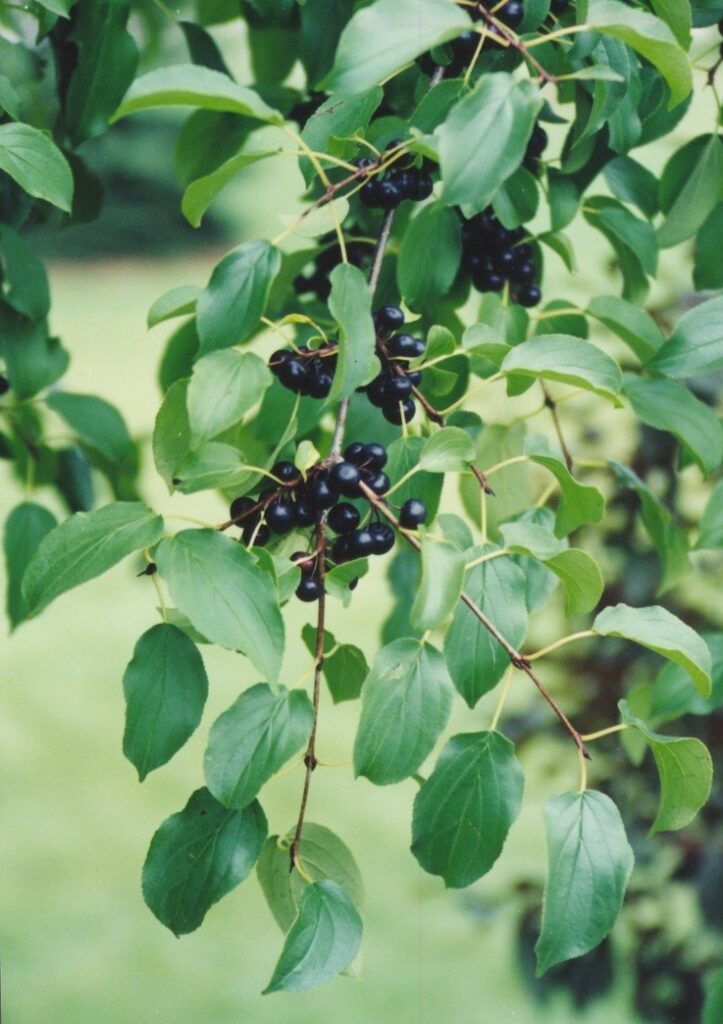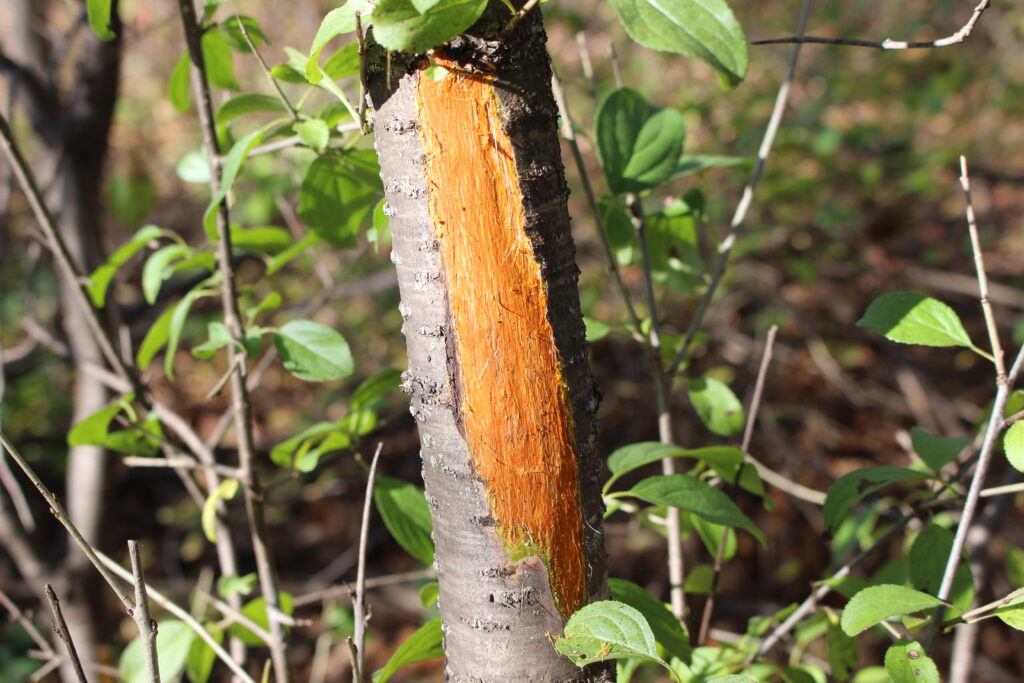Article By: Jaqi Christopher, DNR Forest Invasive Plant Specialist, Rhinelander, Jacquelyn.Christopher@wisconsin.gov

Common Buckthorn leaves with berries. Notice the prominent leaf veins and small thorns at the end of the branches.
Photo Credit: Wisconsin DNR
You can find buckthorn just about anywhere these days. It can sneak into the tidiest of gardens, as well as woodlots and forests. It aggressively outcompetes native plants and even tricks wildlife into spreading it to new areas. For example, birds are enticed to eat the berries, but buckthorn berries have a laxative effect, robbing birds of nutrition and ensuring the seeds are spread quickly across the landscape.
There are two species of buckthorn in the state: common buckthorn and glossy buckthorn. The plants are similar in appearance and equally harmful to native ecosystems. Common buckthorn and glossy buckthorn grow to be 20-25 feet tall. Glossy buckthorn has round, glossy leaves with prominent leaf veins and a smooth margin, while common buckthorn has dull green leaves with small teeth on the margin. The branches of common buckthorn will have a small thorn at the tip of the twig. The bark is similar in both species, being rough and flakey. Native cherry and plum trees have similar bark, but buckthorn can be identified by leaf appearance andby cutting into the bark to expose the bright yellow and orange wood underneath.
Fall is the best time to look for invasive shrubs, as their leaves stay green longer than native trees and shrubs this time of year. Buckthorn is still active during these colder months and is moving nutrients down to its roots to store for winter. By cutting and treating the stump with herbicide, the plant will naturally draw the chemical down into its root system, killing the plant and preventing root and stump sprouting in the spring.
For best results, use an herbicide formulated for woody plants. Cut the stumps below the last branch as close to the ground as possible and treat the entire cut surface of the stump. Do not over-treat as you may contaminate the soil and injure non-target plants. Always follow the label on the herbicide container and wear proper protective gear.
Buckthorn can be treated without chemicals as well. Small seedlings can be hand pulled or dug out of the ground, taking care to also remove the roots. Larger plants that cannot be hand-pulled should be cut below the last branch and close to the ground. Stumps should be covered by a tin can or black plastic bag to prevent resprouting. Do not cut buckthorn without further treatments, as it will readily resprout out the stump.
Take advantage of the mild weather and wander through your woodlot to find buckthorn. You may flag plants or carry your preferred control method with you to treat as you go. Timing your chemical application around the plants’ natural cycle is not only the most effective method of eradicating unwanted invasives, but it reduces the amount of chemicals you introduce to the landscape, giving you the best bang for your buck(thorn).
For more information on control techniques, visit the Buckthorn Factsheet by University of Wisconsin-Extension.

